Choux dough lovers, this recipe is without a doubt for you. I present to you a preparation that, I am sure, will become part of your recipe book, Karpatka Cake, a famous Polish cake made with choux dough and vanilla mousseline cream.
It is difficult to describe how such a simple recipe can give such an extraordinary and spectacular result. I give you my word that it will be your star dessert to share with your guests, friends or family.
Origin of Karpatka Cake
As I mentioned before, Karpatka cake is a traditional cake of Polish origin. As with some recipes, in this case, it is difficult to know its origins.
There are rumors that speak of a pastry chef who, wanting to bake individual puff pastries, placed the pieces too close to each other. The result was a sheet of puff pastry fused into a single piece. He decided to cut it in half lengthwise and fill it with cream. They were then cut into squares and sprinkled with powdered sugar, reminiscent of the snow-covered hills of the Carpathians.
According to a gastronomy textbook, they describe the Karpatka cake as a sheet of shortcrust pastry covered with cream and, on top of it, a sheet of choux dough.
The first written mention dates back to 1972 in a script for students of Polish philology.
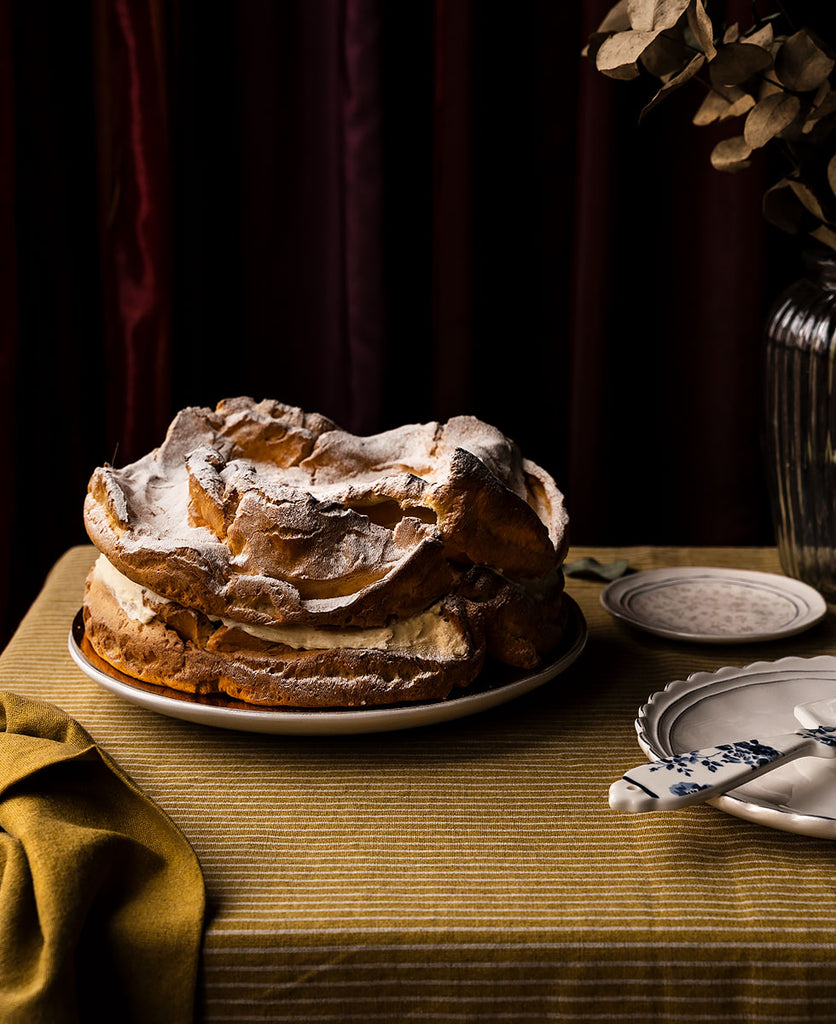
The name of the cake
As you might already guess, its name comes from the Central European mountain range , the Carpathians. The wavy shape of the choux pastry of the cake, after baking, together with the surface sprinkled with icing sugar, creates a direct link with its appearance.
The Karpatka cake consists of two layers of dough separated by a custard and butter filling, mousseline cream. Traditionally, the bottom layer of dough (once cooked) is spread with jam, covered with cream and the other layer of choux dough is placed on top of it.
According to gastronomy textbooks, the bottom layer of the cake should be made of shortcrust pastry and the top layer of choux dough. But the most widespread recipe is made with two layers made with choux dough. Finally, cut it into rectangular portions and sprinkle with icing sugar.
The first prefabricated product with which we could purchase part of the made product to speed up its production process at home, was launched in 1986, by Kujawskie Zakłady Koncentratów Spożywcze w Włocławek , the current company Delecta SA .
In 1995, Karpatka cake was registered at the Patent Office of the Republic of Poland by Delecta SA.
In 1996, Dr. Oetker introduced virtually the same product under the same name. This resulted in a 12-year court dispute that ended in 2011 in favor of Delecta SA.
Making Karpatka cake at home
I know some of you have had some bad experiences making choux pastry at home. But don't worry, in this preparation I detail the entire process step by step so that there is no problem when making it at home.
It is very important that you do not skip any of the steps , as well as observing the consistency of the dough (so as not to leave it too fluid, which would lead to a bad result).
On the other hand, let's prepare a pastry cream, a bit particular, but I assure you you will be fascinated by how creamy it is. Once this cream has cooled, we will combine it with whipped butter to create a muslin cream. If you haven't tried it before, I promise you that it will surprise you.
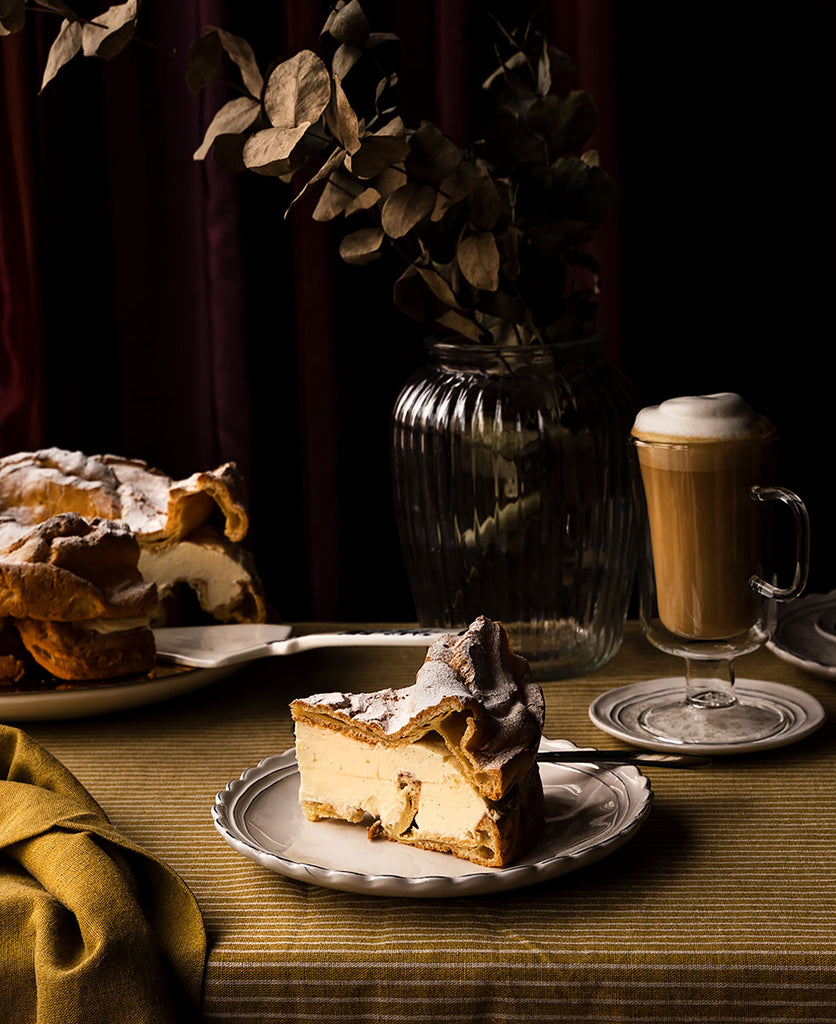
Ingredients
For the choux dough:
- 125 g whole milk
- 125g water
- 140 g loose pastry flour
- 114 g unsalted butter, room temperature
- 4 eggs L
- ½ teaspoon sugar
- 3 g salt
For the muslin cream:
- 500 g whole milk
- 100 g liquid whipping cream
- 2 eggs L
- 130 g sugar
- 50 g Cornstarch
- 2 teaspoons natural vanilla extract or 1 vanilla bean (seeds)
- 250 g unsalted butter, room temperature
Preparation
Prepare the choux dough:
- Preheat the oven to 210ºC with heat up and down .
- Sift the flour, set aside.
- In the DeBuyer sauté pan , add the water along with the milk, salt, sugar and butter. Place over medium heat and let it come to a boil.
- Once it comes to a boil, remove from the heat and add the flour all at once . With the help of a spoon/spatula, stir at a fast and continuous pace.
- You will get a compact ball of dough that we will have to dry. Return to medium-low heat and, stirring constantly, cook for 2 more minutes. The degree of dryness of the dough will determine the amount of eggs it accepts, giving a better result in terms of texture and flavor.
- After this time, transfer the dough to the KitchenAid bowl and let it cool.
- Add the first egg and mix with the whisk at speed 1 until homogenized. The mixing helps the dough to take in air, subsequently helping the dough to rise during cooking.
- Add the next egg and mix until completely integrated. Repeat the same process with the remaining eggs.
- If the dough is very dry and without the right consistency, when you lift the rod and turn it, the dough should form a hook, it should not be too firm, you will have to add a little more egg. In the notes I detail how to do it.
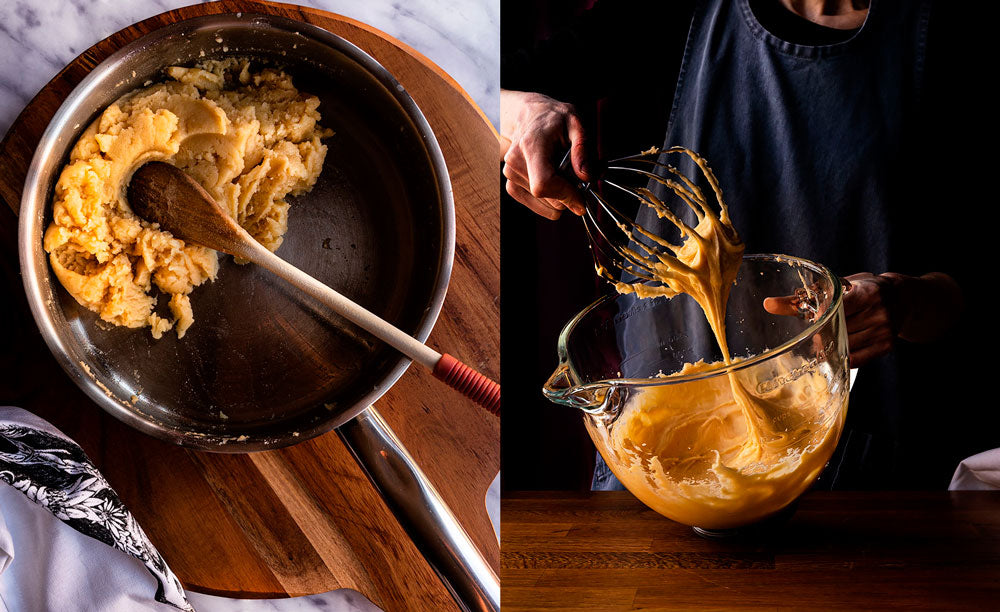
Divide the dough and bake:
- Divide the total amount of dough into two equal parts, it will be about 300 g or a little more.
- Fill the DeBuyer perforated mold with one of the halves. Spread the dough over the entire surface of the mold, trying to reach the sides. You will find that it is a small amount for this size mold, but the dough rises a lot during cooking. When spreading the cream, we will be left with a not very thick layer of choux dough.


Prepare the pastry cream:
- In a medium pot or in the same DeBuyer sauté pan , add the milk along with the cream and vanilla, place over medium heat and let it come to a gentle boil.
- On the other hand, in a bowl beat the eggs together with the sugar and the sifted Cornstarch. Mix well with the help of a whisk.
- Once the milk has come to a boil, pour some into the egg mixture.
- Beat well with the whisk to temper them and prevent lumps from forming.
- Add the rest of the milk, in batches, and mix each time to incorporate and homogenize.
- Pour the mixture into the pot or pan and place over medium heat while stirring . You will notice that the texture, little by little, will become denser.
- Cook until the cream has a creamy and slightly dense texture. It will take you a little while.
- Remove from the heat, pour the cream into a container (the larger it is, the better since it will cool sooner) and cover with plastic wrap to prevent it from crusting (touching the surface of the cream).
- Let cool completely.
Finish the muslin cream:
- In the glass bowl of the KitchenAid add the 250 g of butter. Beat with the whisk at medium-high speed until you achieve an airy, whitish and creamy texture. It will take about 8-10 minutes.
- Add the pastry cream and beat again at medium-high speed until you achieve a smooth, homogeneous and creamy mixture. If necessary, for the KA to lower the cream from the sides and continue mixing. It will take us around 5-6 minutes .
- At the end of the blending, we can leave it for 1 minute at high speed to finish acquiring volume.
- It is very important when making the muslin cream that both elements are at the same temperature .
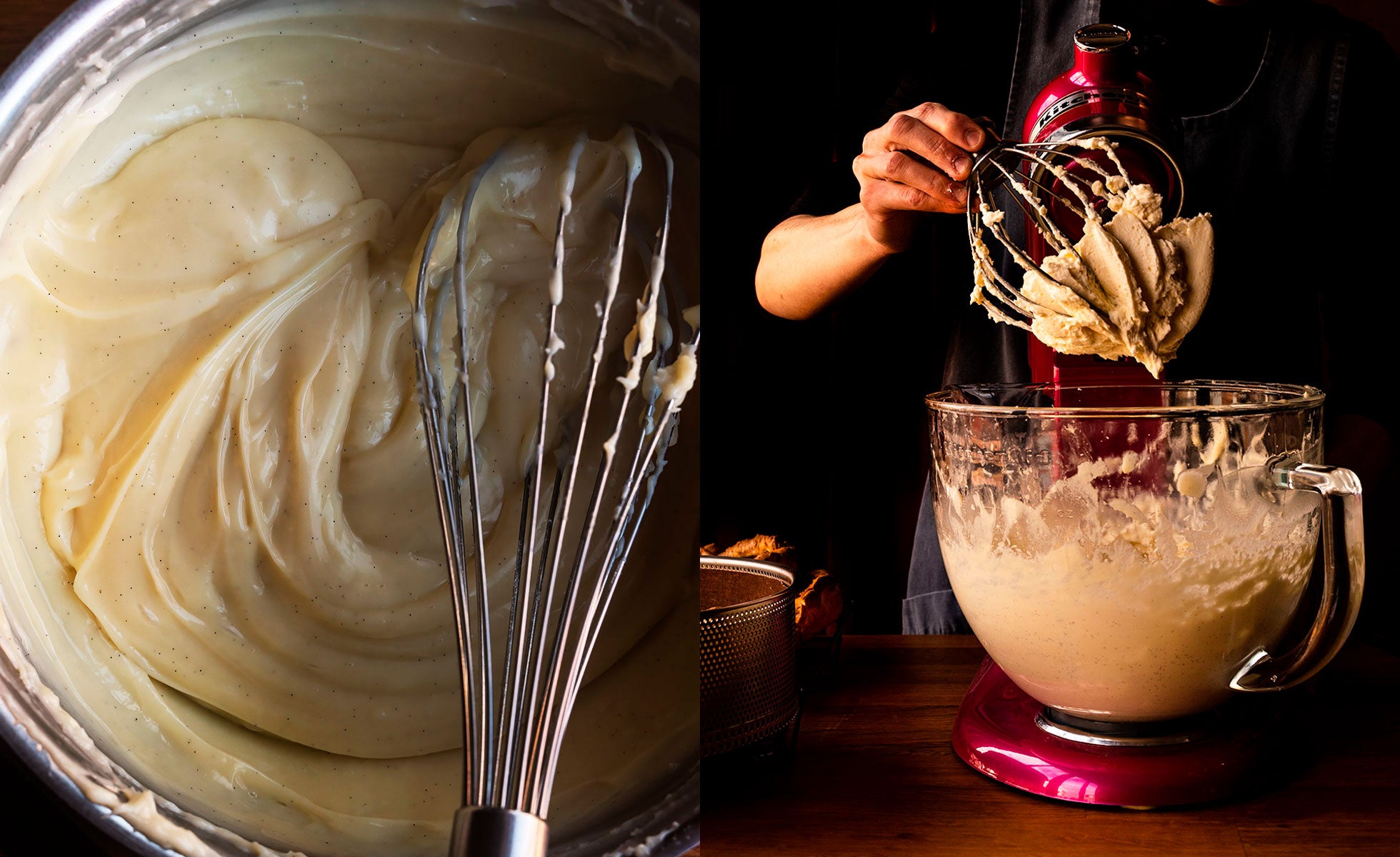
Assemble the Karpatka cake:
- You can assemble the cake inside the perforated mold itself if you wish to better preserve it during the cooling process.
- Place a disk of choux dough into the DeBuyer perforated pan .
- Cover the entire surface with the muslin cream, trying to leave a surface that is as smooth and uniform as possible.
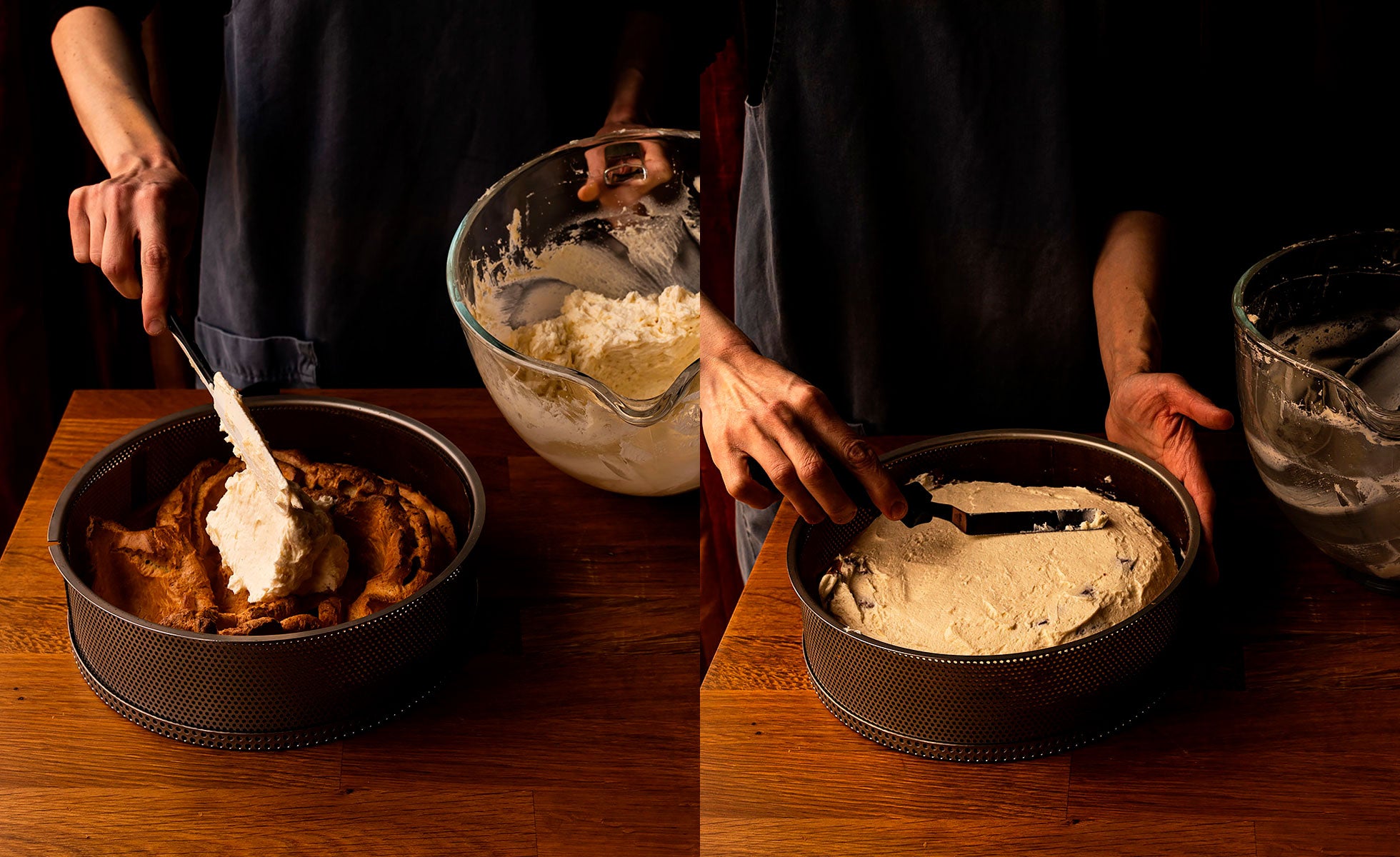
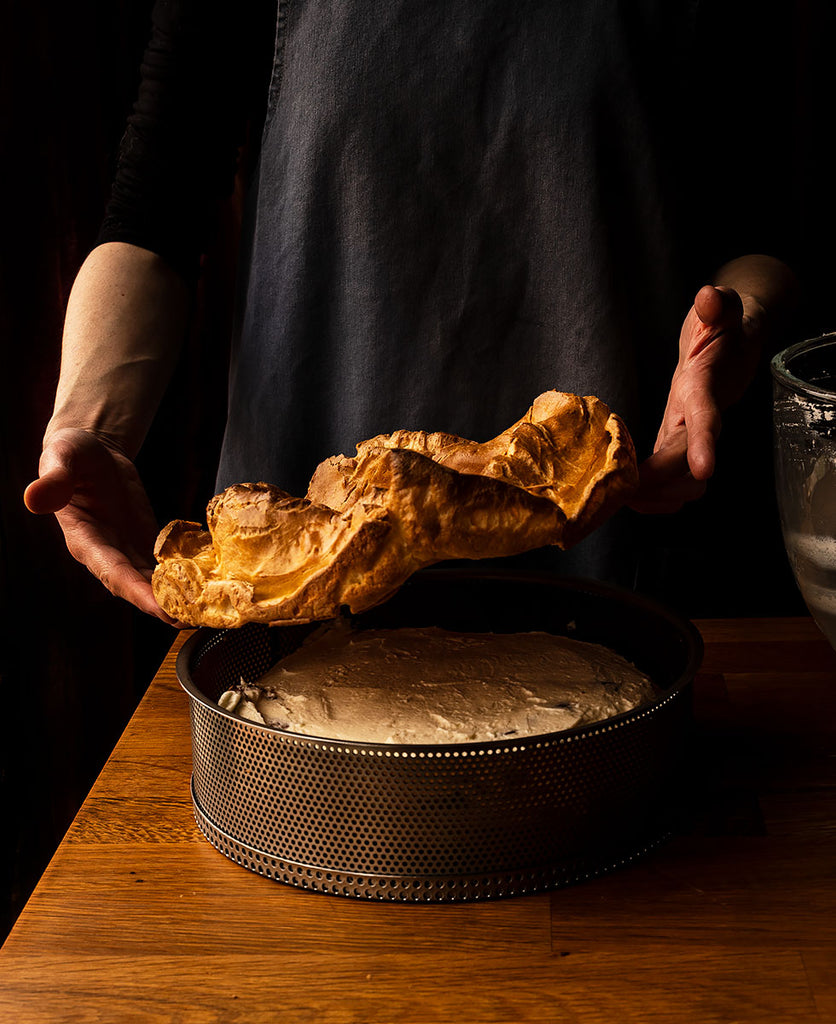
We serve:
- Carefully unmold the cake and place it on a plate or platter to present.
- Sprinkle the surface with icing sugar and serve.
GRADES
- Don't skip the step of drying the choux dough before adding the eggs . The final result will be better in terms of flavor and texture.
- It is important to let the choux dough cool before adding the eggs.
- If when you integrate the 4 eggs, you notice that the dough is still very firm , beat one more egg separately and add it little by little to the dough, carefully observing its consistency once it has been integrated. In this way we will not add a surplus of egg, resulting in a dough for fritters. And the dough will not rise during cooking.
- I made this cake in the DeBuyer perforated mold . It is a wonderful mold and if you take care of it, you will have it for life. The material allows for uniform cooking, resulting in a perfect color, preventing the base or sides from burning. In addition, it comes with Teflon sheets that fit perfectly to the mold. It comes out great and is very easy to clean.
- While you bake the first disc of choux dough, cover the other half of the dough with plastic wrap to prevent the surface from drying out.
- The choux dough discs can be made the day before assembling the cake , they remain in perfect condition at room temperature from one day to the next. Of course, be careful with them if you live in areas of high humidity. In that case, cover them with film.
- We can also make the pastry cream the day before assembling the cake and keep it refrigerated. Before finishing preparing the muslin, remember to temper it for at least 2-3 hours before finishing the cream.
- Whenever possible, use natural vanilla. Either in pod or in natural extract, instead of chemical aromas.
- The butter and the pastry cream must be at the same temperature when we put them together to make the mousseline cream. Otherwise you will get a cream with a grainy texture or a cut appearance. This can be solved by leaving the cream at room temperature so that it reaches the same temperature and finish whipping it later, but this will prolong the preparation process for a long time.
- It is possible that after cooking the choux dough discs , if you let them rest at room temperature until the next day, they will slightly increase in volume and will not fit well into the mold. In that case, assemble the cake outside the mold.
- Don't worry if there are reliefs in the dough, they are beautiful and basically their essence . When covering with the cream, you can achieve a uniform and smooth surface. The cut is beautiful with those irregularities.
- The cake can be made a day in advance before serving.
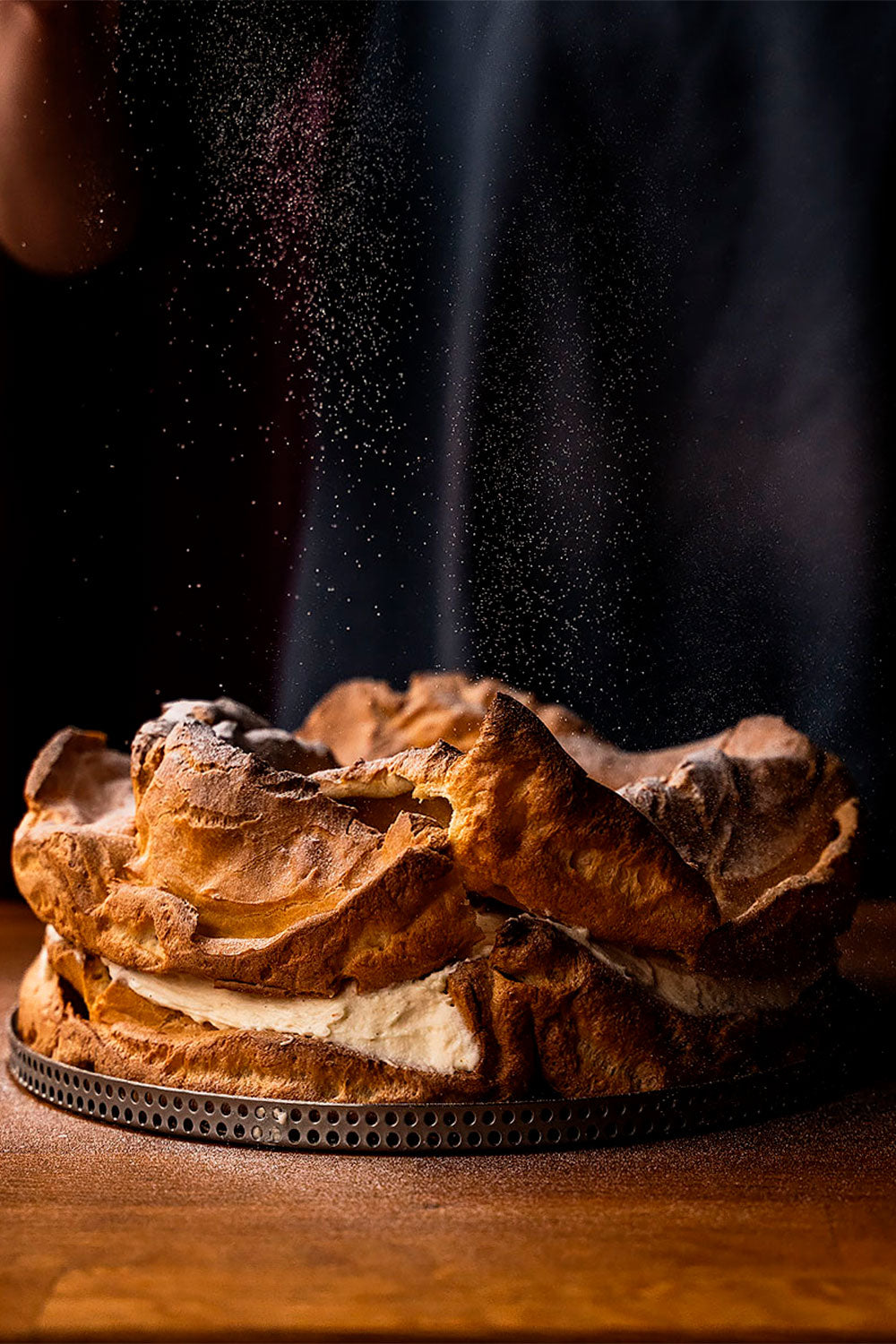
This Karpatka Cake is one of those easy, successful and simple recipes that will make you triumph at dessert time. In addition, it can be prepared in advance unless you sprinkle the icing sugar just before serving.
Don't forget to tell us your experience and what you thought of it!
Clarification: Difference between Karpatka Cake and Kremówka Cake
Two cakes that share an image of two interspersed layers of cream are often confused. Kremówka Cake and Karpatka are not the same cake, although they share some similarities in their appearance. Both are popular desserts in Polish cuisine, but they have differences in their preparation and presentation.
-
Kremówka Cake (Vanilla Cake): Kremówka Cake, also known as Vanilla Cake, Napoleon Cake or " Papieska kremowka" (because it is known that it was a cake that Pope John Paul II really liked ), is a traditional Polish dessert that It consists of layers of puff pastry interspersed with vanilla cream. It is usually cut into squares or rectangles and sprinkled with icing sugar on top. It is a rich and decadent dessert that is often served on special occasions.
-
Karpatka Cake: Karpatka is another delicious Polish cake, but instead of puff pastry, it is made with a dough similar to that of profiteroles. The dough is divided into layers and filled with vanilla cream or pastry cream. The top is usually sprinkled with icing sugar or sometimes grated chocolate. Karpatka is often served in the form of square or rectangular portions.
In short, although both Polish pies are delicious and popular desserts that include vanilla cream, they differ in the dough base used. Kremówka Cake is made with puff pastry, while Karpatka is made with a dough similar to that of profiteroles. Both are delicious options for those who enjoy vanilla desserts in Polish cuisine.
























Comments
Claudia said:
¡Super agradecida, Celia! te mando un efectuoso saludo, gracias por seguir el blog con tanto cariño.
Cecilia Iturra said:
Hola soy de Chile, pero leo siempre su pag pero no puedo comprar ya que no hay despacho para aca,pero quiero felicitarlas por lo precisa de sus recetas maravillosas,muchas gracias
Claudia&Julia said:
Hola Juan Antonio,
Sin duda las recetas de Eva son maravillosas, como ella :)
Muchas gracias por tu comentario.
¡Un saludo!
Juan Antonio Mateos said:
Un 10 para Eva (Bake Street )
Siempre enseñándonos receta perfectas